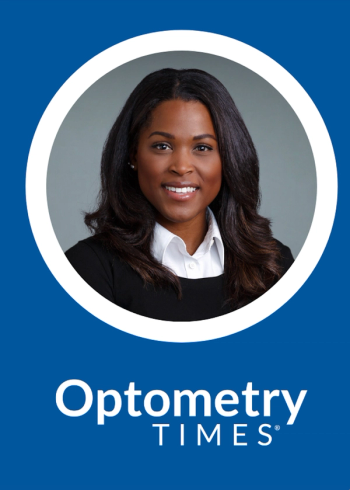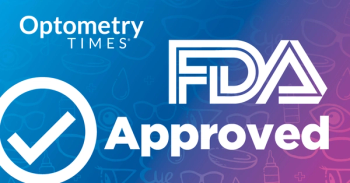
- May/June digital edition 2025
- Volume 17
- Issue 03
Evaluating the effects of perfluorohexyloctane on biometry: A Q&A with Kayla Karpuk, OD, from ARVO 2025
Can a drop of perfluorohexyloctane, known to persist in the tear film, influence the precision of keratometry and ultimately affect surgical planning?
At this year’s Association for Research in Vision and Ophthalmology (ARVO) meeting in Salt Lake City, Kayla Karpuk, OD, presented compelling new research on the impact of perfluorohexyloctane (PFHO) ophthalmic solution (Miebo; Bausch + Lomb) on preoperative biometry and intraocular lens (IOL) power calculations. Her poster, titled “The Impact of a Single Drop of Perfluorohexyloctane Ophthalmic Solution on Biometry Measurements and Intraocular Lens Calculations,” addressed a timely and clinically relevant question: Can a drop of PFHO, known to persist in the tear film, influence the precision of keratometry and ultimately affect surgical planning?
Karpuk’s prospective observational study investigated this by analyzing biometry measurements in subjects with dry eye before and after a single instillation of PFHO. With both OCT-enhanced and Scheimpflug imaging used to track changes at 15 and 60 minutes post-instillation, the findings offer reassurance for surgeons—demonstrating that PFHO has no significant impact on preoperative measurements critical for successful cataract outcomes.
In this Q&A, Karpuk shares insights into the study design, clinical implications for cataract and refractive surgeons, and how this research contributes to the growing body of dry eye science showcased at ARVO.
For those who weren’t able to attend ARVO this year, can you detail the parameters and methods of the research featured in this poster?
This prospective study looked at pre-operative biometry measurements of approximately 60 eyes of 30 subjects with healthy dry eye parameters at baseline. Biometry measurements were obtained prior to instillation of PFHO and compared to measurements obtained 15- and 60-minutes post instillation. Keratometry measurements were obtained using both an automated OCT-enhanced method as well as Scheimpflug corneal images.
How did the actual performance of preoperative PFHO compare to your expectations?
It was an important concept to better understand; we know from the rabbit PK data the PFHO molecule was detectable in the tears for up to 6 hours post-instillation. We wanted to better understand how a drop that is made from 100% of a single molecule, such as MIEBO, and detectable in the tears for a prolonged period of time, would impact measurements. The results of this study were consistent with what we expected—use of PFHO and presence of the PFHO molecule in the tears does not have an impact of biometry as a majority of patients in the study did not demonstrate a significant change in keratometry measurements 60 minutes post-instillation.
This is a prospective, observational study. What are the next steps in this research?
The value of treating the ocular surface prior to any cataract or refractive cataract procedure is well established and future research could involve evaluating perioperative use of PFHO in these patients to better understand the value of this treatment option.
What immediately-applicable clinical advice does this research yield, especially for cataract/refractive surgeons who hope to limit the prevalence of dry eye disease among their patients?
I think this particular study provides strong evidence that use of MIEBO preoperatively does not negatively impact biometry measurements and ultimately does not lead to less predictable IOL power calculations for patients.
It helps to rule out that changes seen in pre-operative corneal measurements would be due to the treatment, or molecule itself per se, but rather stabilizing the underlying disease state is what helps ensure we are getting the most reliable results ultimately leading to successful cataract patient outcomes.
What was the response to these findings at the meeting? How do you think this research fits into the broader landscape of clinical dry eye research presented at ARVO, especially this session?
Dry eye disease is a hot topic and the interest in dry eye was palpable at ARVO. We are very fortunate to have had multiple new topical therapies come to the market in recent years with more on the horizon. As new treatment options are introduced, it is critical to better understand what patients would benefit from each treatment option to tailor and further individualize approaches to treatment of dry eye.
Articles in this issue
5 months ago
The toxic truths in eye health6 months ago
Taking your OCT outside of the posterior pole6 months ago
What do we lose if we do not value residencies?Newsletter
Want more insights like this? Subscribe to Optometry Times and get clinical pearls and practice tips delivered straight to your inbox.



















































.png)


